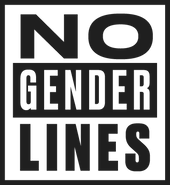Gender is Evolving

Our understanding of gender continually evolves.
In the course of a person’s life, the interests, activities, clothing and professions that are considered the domain of one gender or another evolve in ways both small and large.
This has perhaps never been more true than it is now. The data show that today’s young people have significantly different understandings of gender than previous generations, with consequences for all children, families, organizations and institutions.
For example:
- A 2015 Fusion Millennial poll of adults ages 18-34 in the USA found that the majority see gender as a spectrum, rather than a man/woman binary.
- A 2017 Harris Poll of millennials found that 12% identify as transgender or gender non-conforming.
- Research by J. Walter Thompson Intelligence (the research arm of the global marketing communications company) found that 56% of those aged 13-20 know someone who uses gender-neutral pronouns (such as they/them).
- Leading businesses are beginning to change traditional gender-based marketing of products, such as removing “pink and blue” clothing and toy aisles.
All of us are inundated with gender messages from the time we are born, yet we offer children few opportunities to more deeply consider or understand this fundamentally important aspect of life. Basic gender literacy is essential for children to understand their own gender, engage in healthy relationships, identify and place media and social messages in context, and have agency in determining aspects of their gender now and in the future. Societal ideas about gender will affect every critical aspect of their lives, from education to career, finances, relationships and more.

